In the 1943-45 log book of Don McBride, Giff listed his home address as: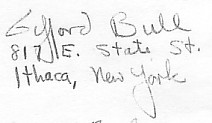 Gifford Bull 817 E. State St. Ithaca, New York 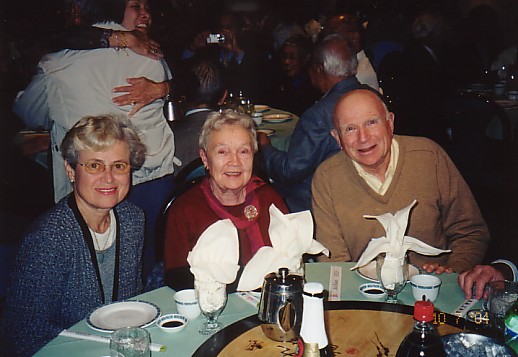 Ilse Shilling (widow of CNAC Captain Erik Shilling), Grace and Giff Bull CNAC Reunion - 2004 (Photo Courtesy of Tom Moore) October 15, 2005 Hi Tom, I believe Gif earned a masters degree in engineeting at one of the universities in New York state. He worked in the aerospace engineeting dept. at Mississippi State U. He landed a CNAC C-46 on its belly in a rice paddy in India. He took many good photographs on the hump which he recently donated to the Air Force Museum in Ohio. That's about all I know. Carey (Bowles) July 19, 2007 Tom Here are some of my photos, selected for a talk I have given twice. Maybe more of me than is justified, but these are MY pictures. I actually signed on with CNAC in the summer of 1944. I was an engineer , working on autopilot research and development in the research lab of Sperry Gyroscope Co. in Garden City. Long Island. Bill Odom, a Sperry pilot and a friend, and I went down together to the PanAm office in the Chrysler Building in New York City, and signed on with CNAC. I left Sperry in June, 1944, and went home to Ithaca, NY to wait while Pan Am got the visas and travel priority. They took all summer doing that, so I spent the summer at the family cottage on Cayuga Lake, sailing my brother's boat and dating girls. Can you think of a better way to wait? I left the States October, '44 with Jeff Hanan, via ATC. and arrived in Calcutta. On Nov 2, 44 I flew with Erik Shilling and shot landings, my first time in a C-47. Then Nov 10 I went up country with Bill Bartling, and started flying the Hump. Potty checked me out Jan 17, 45. I flew C-47's until C-46 checkout in May 45, then both until the end of the War. I quit CNAC Aug '45, having flown just over 1000 hours, 126 round trips or 252 crossings. There were lots of pilots with many more trips, because they started long before I did. I have decided to send you the CNAC part of "Learning to Fly", which I have written primarily for my children. I am sending it as an attachment. If it doesn't make it, let me know and I will get my son, my Mac guru, to help me. It may come as a separate e-mail. (still working on this - Tom) My CNAC experience is fresh in my memory, and the large amount of instrument flying in respectable airplanes on the well-known Hump was important in giving me standing in later flying, but CNAC was not the major and defining event in my life, as it was for some of our people, like Christy. I now have 16,000 hours, most of it as an engineering test pilot, so there has been a lot of interesting flying and engineering work besides CNAC. Keep up the good work. I'm always interested when pepperbud e-mails come. Giff Bull 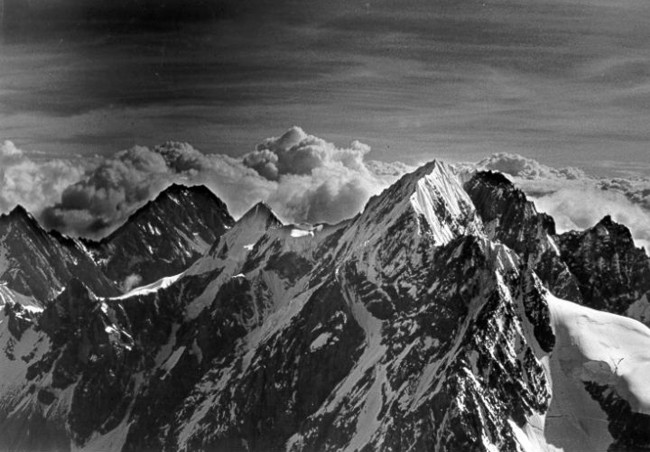 Likiang Mountain, or Snow Mountain, (23,000 feet high) from my CNAC C47. On the way from Dinjan, India to Suifu (Ipin) 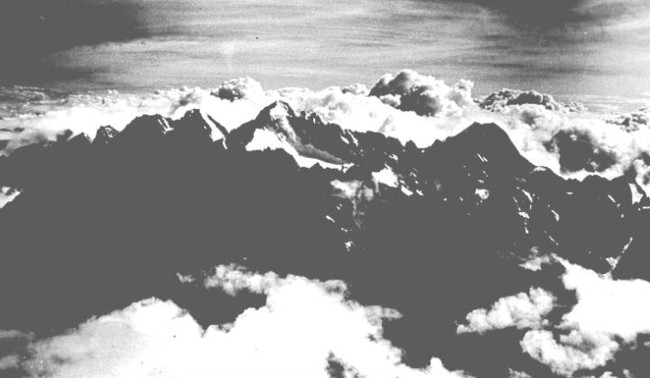 Approaching Likiang Mountain, on top of the clouds, on CNAC flight from Dinjan to Suifu (Ipin)  Map to show to show the Hump route in relation to the rest of China and nearby countries The gray area was occupied by the Japanese.  CNAC C-47 Number 82, flying from Dinjan to Suifu (Ipin). Photo by Jim Dalby, CNAC 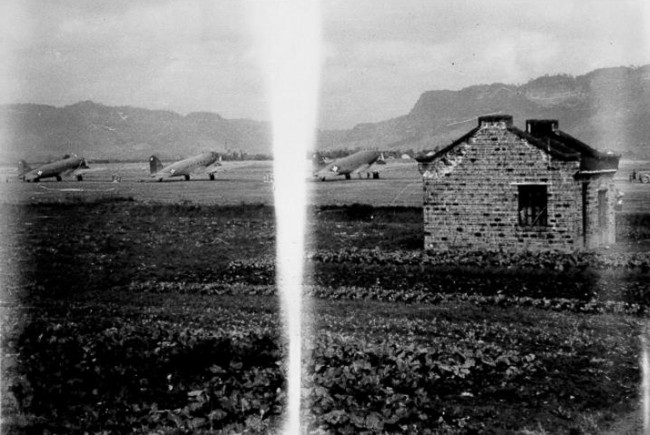 CNAC C-47’s unloading at the grass airport at Suifu (Ipin), 12/11/44  Unloading CNAC C-47 at Suifu (Ipin). The boxes contain 20 MM ball cartridge ammunition, which we had just flown over the Hump. CNAC Capt. Bill Bartling in the white hat telling the fuel man in the white coat how much fuel needs to be taken from the drums on the ground, which we had carried over the Hump on that trip, and put into the fuel tanks of the airplane. Capt. Bartling had been a Flying Tiger (American Volunteer Group) pilot.  Fueling CNAC C-47 at Suifu, 12/11/44. We carried the 55 gallon drums of fuel in addition to our cargo over the Hump. Men are pouring gas into the square 5-gallon cans. They will carry the cans up the ladder and pour the gas into the fuel tank in the wing, so we would have enough fuel for the return trip to India.  Suifu, 12/11/44. Man pouring gas from 5-gallon can into funnel and into the fuel tank. Other man is wiping up oil from the engine and spilled gas.  CNAC C-47 in China, probably Kunming. Workers carrying baskets of crushed rocks to maintain the runway. The parking area is “paved” with Perforated Steel Plank, widely used in World War II. Photo By Jim Dalby, CNAC  Capt. Casey Boyd, CNAC, taking off from the grass runway at Suifu (Ipin) in CNAC C-47 106, 5/17/45. The runway at this airfield was not paved. It was grass. 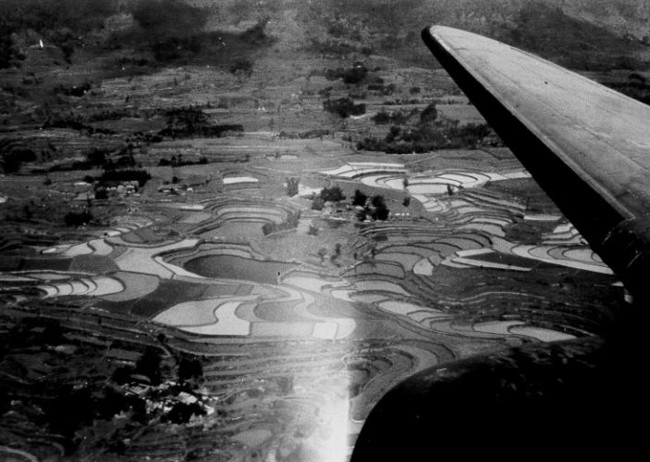 Rice paddies, just after takeoff from Suifu, 5/17/45. The blur is the disk of the spinning propeller of the C-47. 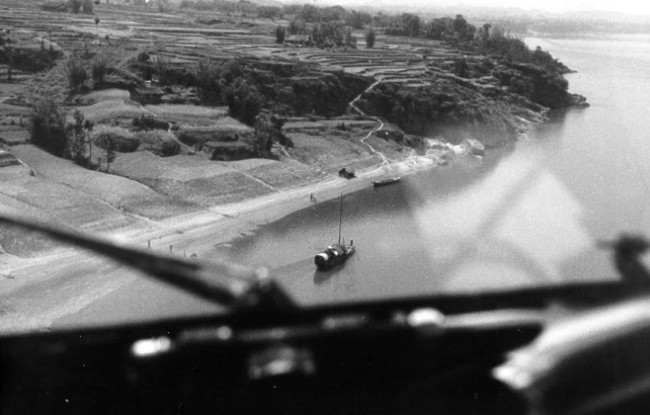 View from the cockpit of a CNAC C-47 flying up the Yangtze River, very low. The diagonal thing in the lower left of the windshield is the windshield wiper arm. 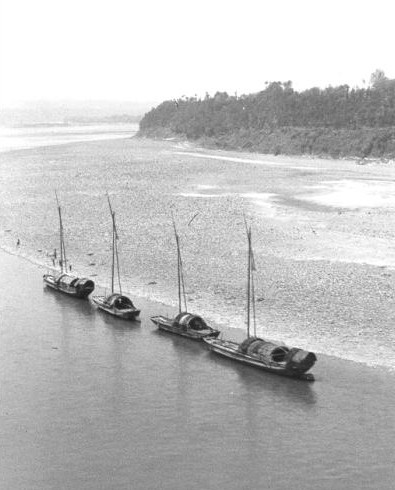 Four boats moored by a gravel bar along the Yangtxe River. Taken from a CNAC C-47 No.??  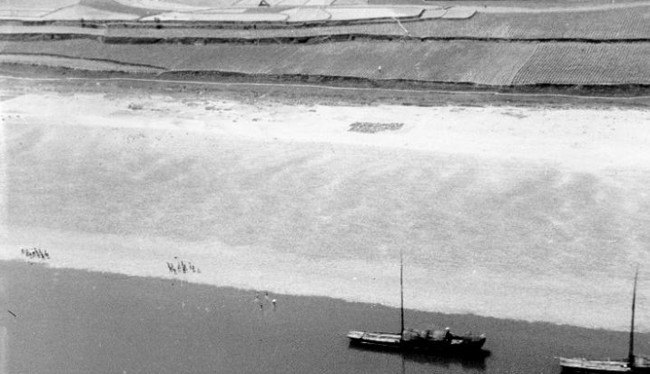  Early morning on the Hump, Dinjan to Kunming. The Salween Gorge is immediately on the far side of the dark ridge up ahead. Looking out the windshield of my CNAC C–47. You can see the rivets on the nose. Windshield wiper blade in the center, alcohol tube on the right, to squirt alcohol on the windshield and melt ice. 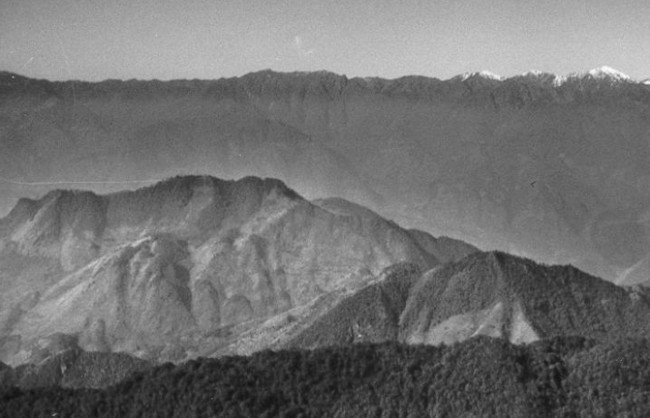 Main Ridge of the Hump viewed from the east, flying my CNAC C-47 from Kunming, China, to Dinjan, India. The Salween River gorge is past the first set of hills and this side of the main ridge. It is very narrow and around 10,000 feet deep. 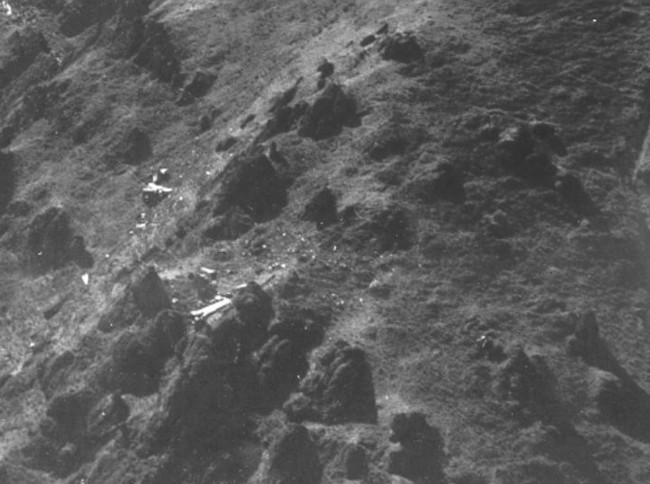  CNAC hostel at Dinjan, India. November, 1944. It had been the living quarters for the manager of the tea plantation that surrounded it. Those are tea bushes in the foreground. The ground floor had offices, dining room, and living rooms, and the upper floor was a big dormitory, with lots of beds with mosquito nets on them. Notice the thatched roof. 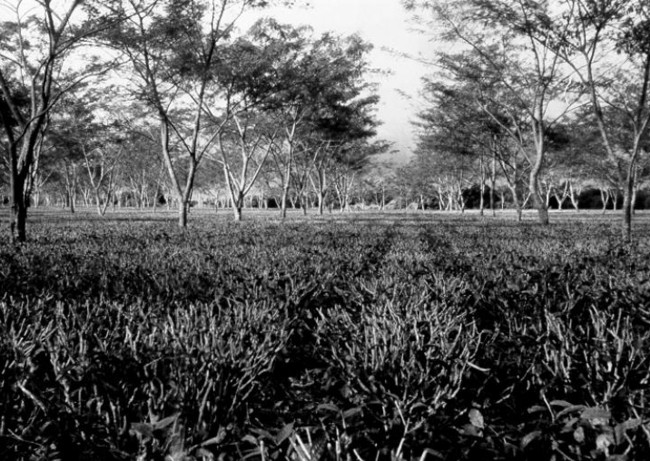 The tea plantation in front of the CNAC hostel at Dinjan, India, November 1944. The low bushes are tea bushes in the winter, so they have no tea leaves on them. The trees are planted, to provide the light shade that tea needs. 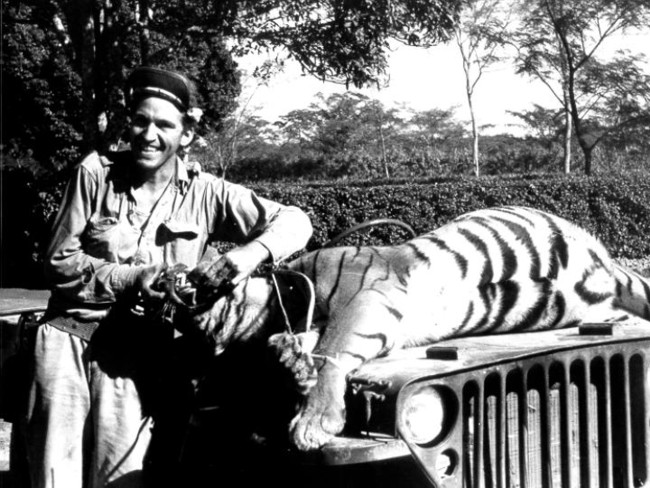 Capt. Sherwin “Fuzzy” Ball liked to hunt and arranged with a local native hunter to go after a tiger in the winter of 1944. He brought the tiger in to the Dinjan hostel on the hood of the CNAC Jeep the morning after he shot it. A few weeks later he was killed, flying on the Hump. 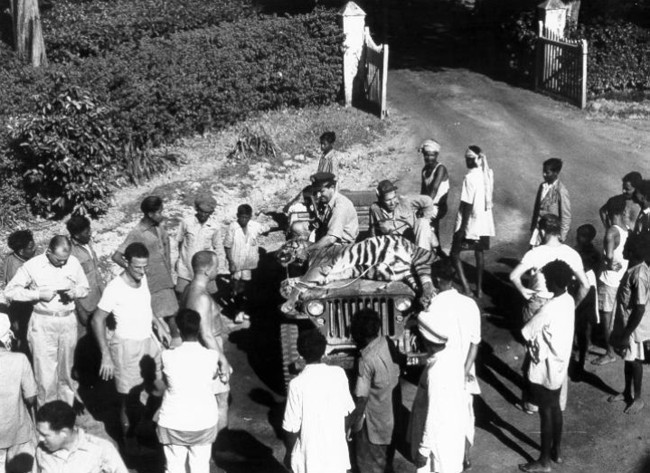 Capt. Fuzzy Ball brought the tiger he shot to the Dinjan hostel, to the great interest of everyone there, pilots and staff alike. That is Jake Fassett, hostel manager on the left, winding the film on his camera. The man with no shirt is Howard Dean, one of the CNAC operations men, and father of the politician Howard Dean. 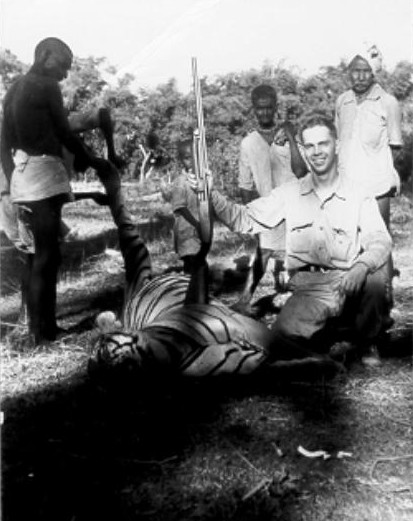 CNAC pilot who did not shoot the tiger holding a gun as though he were the hunter. That one tiger was good for lots of stories. Notice work is beginning on skinning the tiger, starting with the back leg, to make a tiger skin rug. Dec. 1944  G. Bull, with no gun, by Fuzzy Ball’s tiger. Dec 1944 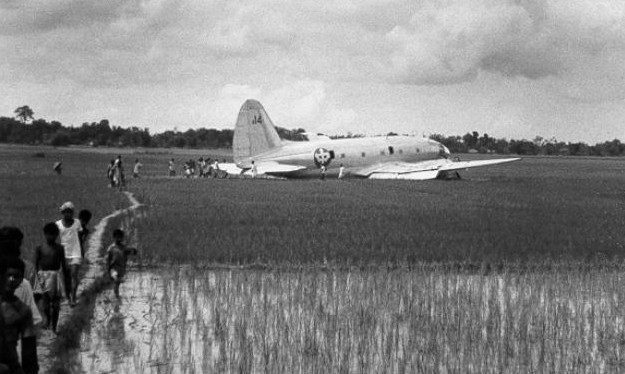 CNAC C-46, belly landed in a rice paddy. The engine failed on takeoff from Dinjan, India. The captain decided the airplane would not fly well enough to get back to the airport and landed the airplane with the wheels up in the muddy rice paddy. Summer, 1945 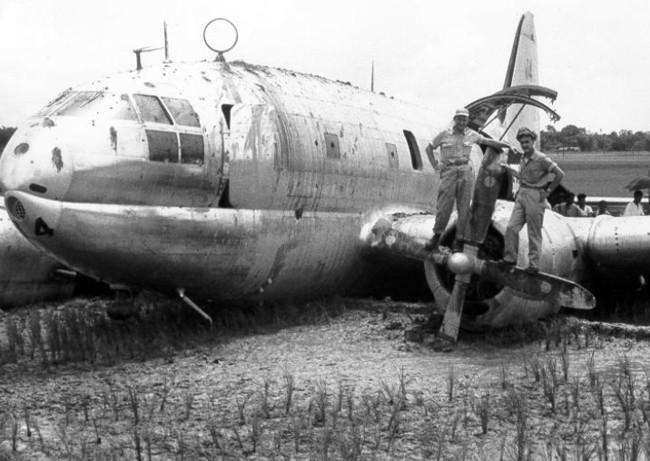 CNAC pilots Charles Sullivan and Capt. Barton Hahn standing on the propeller of the C-46 they landed in the rice paddy. Notice the mud splatters on the top of the airplane. Summer, 1945.  Riding the elephant to get out to the C-46 in the rice paddy. We didn’t even get our feet wet. From left, CNAC pilots; Barton Hahn, Curtiss-Wright technical representative, Gifford Bull, Charles Sullivan and the elephant driver. Summer, 1945 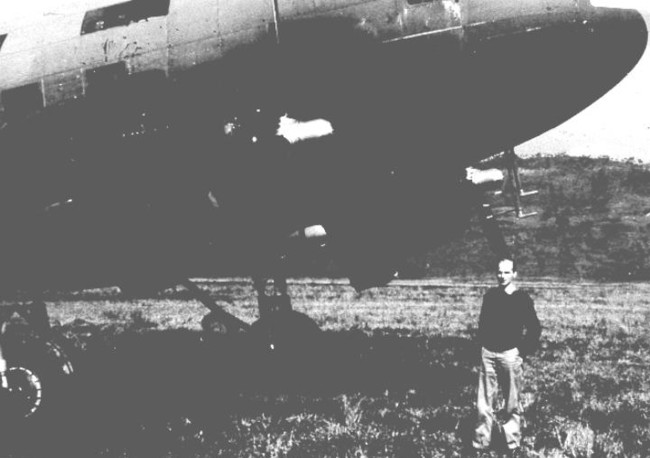 CNAC Capt. Gifford Bull by CNAC C-47, Suifu (Ipin), China, 5/17/45 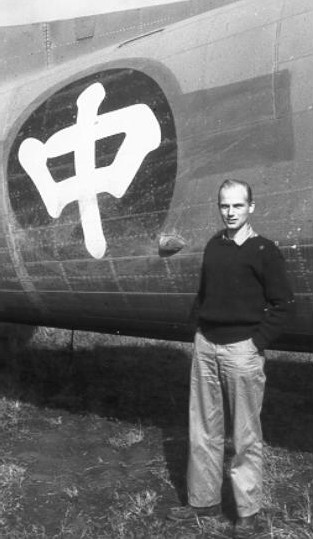 CNAC Capt. Gifford Bull by CNAC C-47, Suifu (Ipin), China, 5/17/45 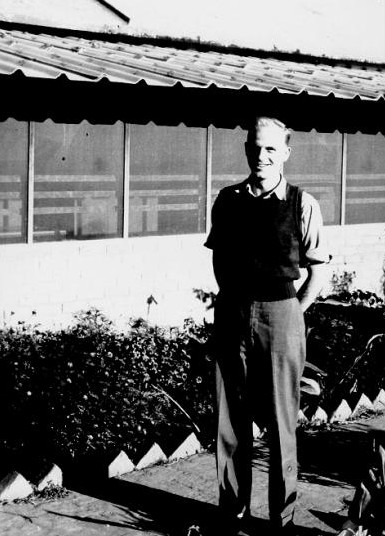 CNAC Capt. Gifford Bull standing by CNAC hostel at Dum Dum Airport, Calcutta, India, Jan, 1945. How young we all were at that time! 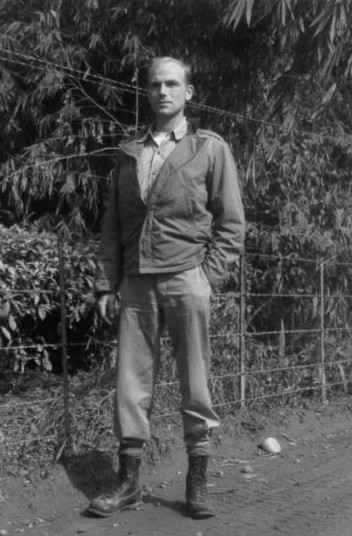 CNAC Capt. Gifford Bull, near the Dinjan hostel. Winter, 1944. These are the clothes I usually wore while flying in the winter. 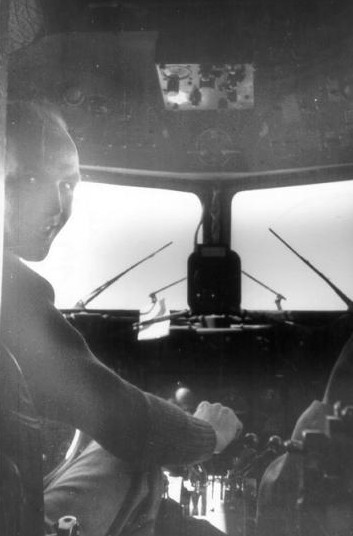 CNAC Capt. Gifford Bull in the cockpit of a C-47, flying across the Hump from China to India, early 1945. 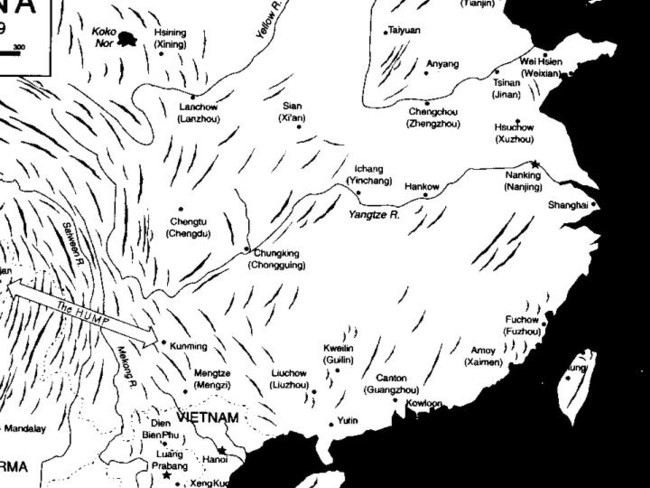 Map showing the Hump route and some of destinations. 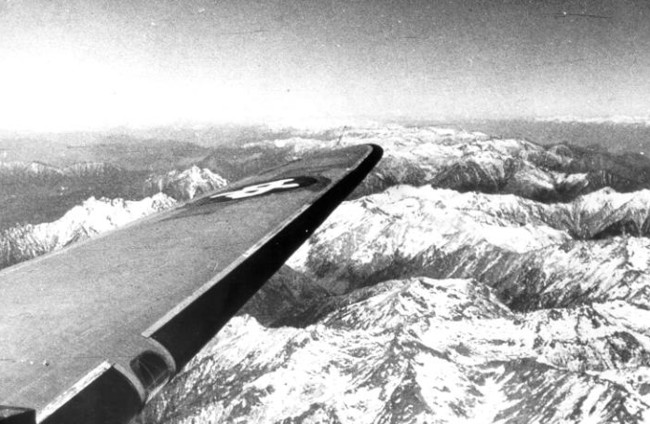 CNAC C-47 over the Hump, flying from Dinjan, India to Suifu, China. Photo by CNAC Capt. Jim Dalby  Fueling a CNAC C-47 at Suifu, China, 12/11/44. We carried the 55 gallons drums of fuel with us over the Hump so we could add enough fuel to get home again. Fuel was poured into the 5 gallon square cans, carried up the ladder and poured into the wing tanks. 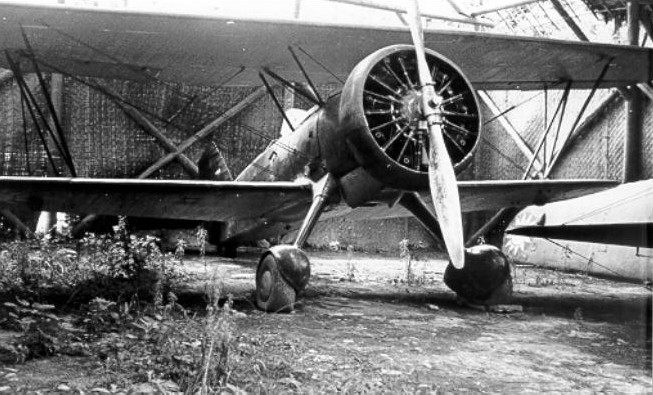 At Suifu, China, there were some old hangars of wooden poles with bamboo mats, with some obsolete airplanes in them. Here is a Curtiss Hawk with a Wright Cyclone engine. Curtiss sold a number of them to China in the 1930’s. The airplane was intact and still looked good. It even had air in the tires. 5/17/45. 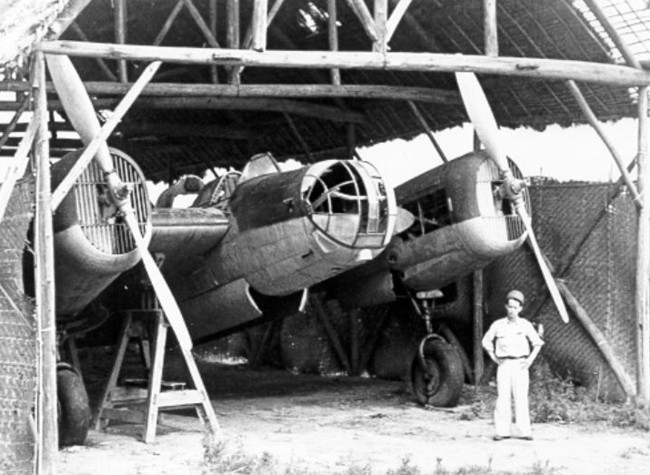 Another old airplane in the pole-and-bamboo hangars at Suifu, China. This is a Russian Tupelov SB-2, obsolete by World War II. With more modern engines and propellers it was widely and successfully used in World War II. When it first appeared it was faster than most fighters. I looked it over carefully from an engineering point of view, and concluded that it was well designed and well built. The CNAC mechanic who showed me the hangars wanted his picture taken, so here he is. 5/17/45 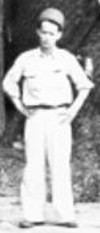 Anybody know this CNAC mechanic's name??? 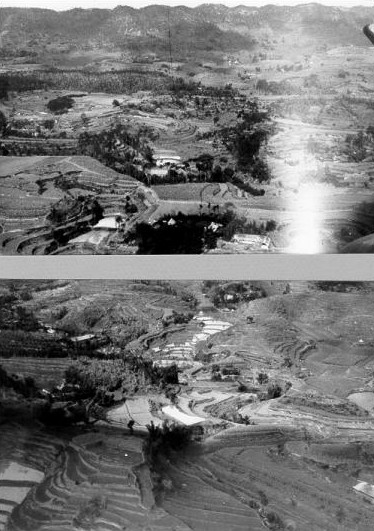 More hills and rice paddies, taken shortly after takeoff from Suifu, China. 5/17/45 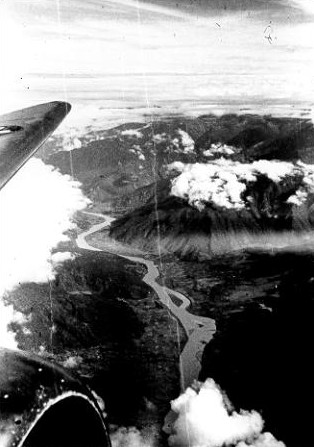 The Yangtze River flowing between Likiang Mountain and another mountain, 18,500 feet high. The Yangtze is about 6,200 feet above sea level, according to J. W. and C. J. Gregory, British geologists who walked all over this area in 1920 and 1921, So the river is about 15,000 feet below the top of nearby Likiang Mountain. In good weather, the scenery over the Hump was spectacular. 12/11/44.  We went for a walk in the woods near the CNAC hostel at Dinjan, India. Capt. Jeff Hanan rides in a ratty dugout, with almost no freeboard on one side. Winter, 1944 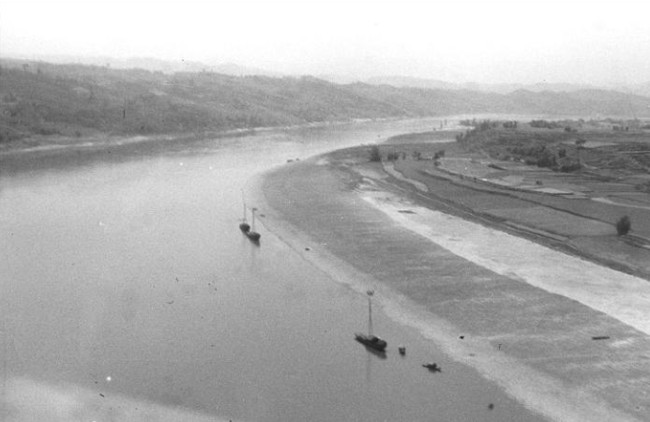 Three boats being towed up the Yangtze River near Suifu, China. You can see the gangs of men pulling the tow ropes ahead of each boat. Photo from CNAC C-47 109, 5/17/45. 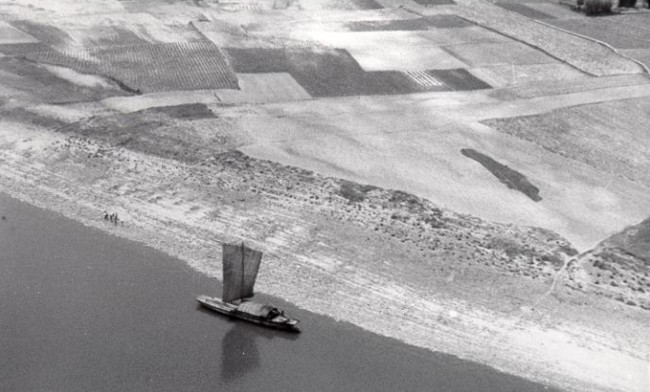 Boat being towed up the Yangtze River near Suifu, China by the gang of men to the left of the boat. The sail is spread in the hopes of a wind to help get the boat upstream, but the sail is limp and the reflection shows the still water, so there was no wind. Notice the flat land with crops planted in the fields. From CNAC C-47 No. 109, 5/17/45 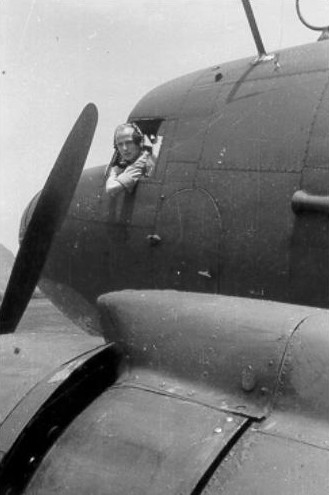 CNAC Capt. Gifford Bull in CNAC C-47 No. 109, Suifu, China, 5/17/45 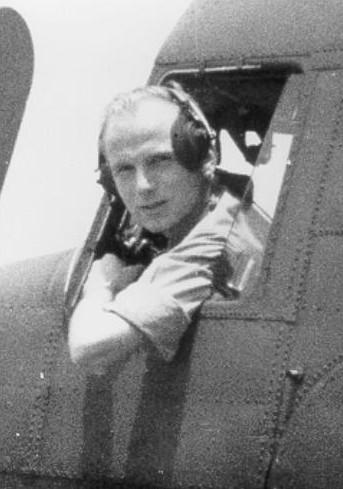 Same picture. CNAC Capt. Gifford Bull in CNAC C-47 at Suifu, China, 5/17/45 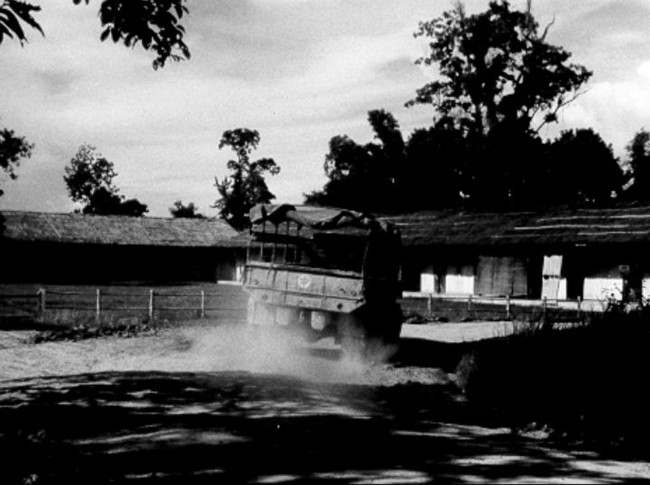 The new CNAC hostel at Dinjan, India. Larger and more practical than the bungalow in the tea patch, but not as romantic. The CNAC military truck was used to transport crews from the hostel to the airport. 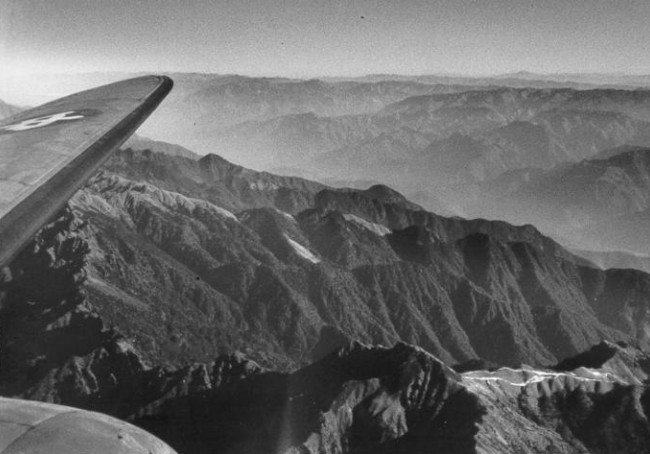 A clear morning on the Hump, rather far south, near Paoshan. You can see the Chinese “Chung” symbol on the wing instead of the American star insignia. Early 1945, from a CNAC C–47. 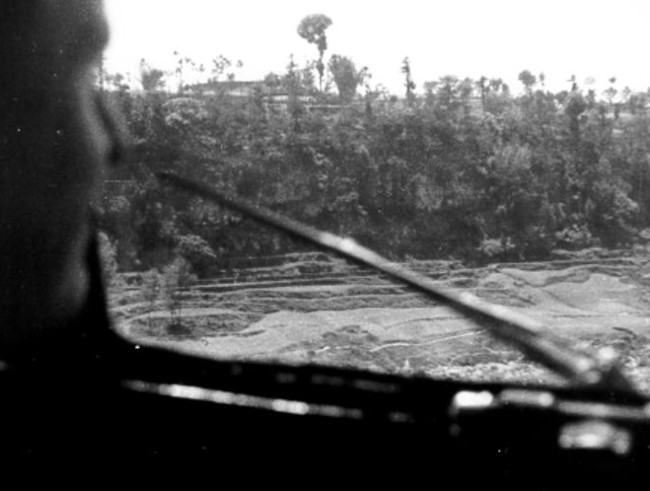 Flying very low in CNAC C-47 No. 109 up the Yangtze River after takeoff from Suifu, China. Profile of CNAC pilot Jerry Swantek. 5/17/45 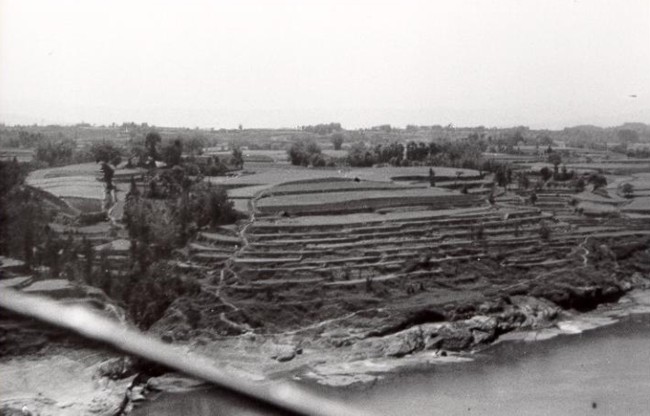 Terraced rice paddies along the Yangtze River, just after takeoff from Suifu, China, 5/17/45, CNAC C-47 109. Diagonal bar is the windshield wiper arm. Notice the abrupt and rocky shore here on the outside of the curve of the river where the river flows faster, unlike the gravel bars on the inside curves where the flow is slow. Going up stream the boats hug the inner curves to avoid having to tow upstream against the current. 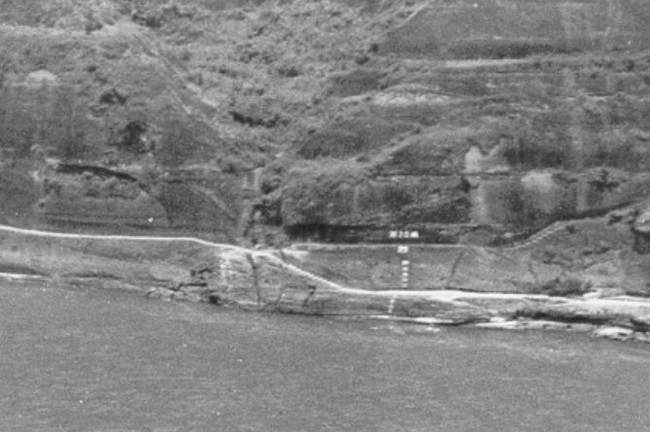 Marks painted on the rocks to indicate the height of the water, rather similar to the Plimsoll marks painted on ships. Notice the path along the river. From CNAC C-47 No. 109, 5/17/45  We were very low. The picture was taken out of the cockpit window of CNAC C–47 No. 109, 5/17/45, and we were hardly higher than mast height. Giff -- Thank you for some great photos!!  or would like to be added to the CNAC e-mail distribution list, please let the CNAC Web Editor, Tom Moore, know. Thanks! |